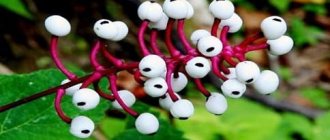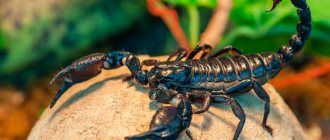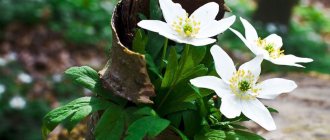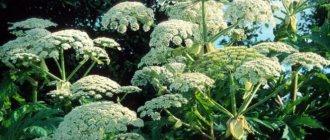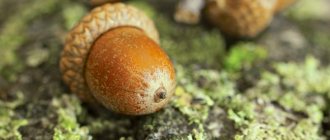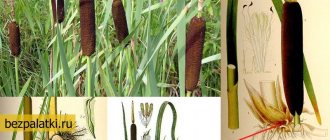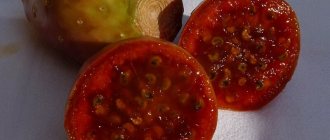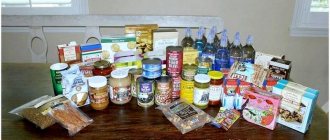Our forests abound with plants from which you can prepare such a beloved drink as tea.
Leaves of fireweed (fireweed), strawberries, raspberries, blackberries, blueberries, lingonberry buds, shoots of flowering heather, thyme, chaga, young tender leaves of meadowsweet and bergenia are brewed.
Most often, the leaves are prepared - when brewed, they give a drink that looks very similar to natural tea.
Fresh and dried leaves are brewed separately or in mixtures. Usually, one or two types of plants are taken for berry-herbal tea. Leaves are harvested on clear, dry days, after the dew has disappeared. In order to always have forest tea on hand, the leaves are dried, but not in the sun, but in well-windowed, dry, warm, shady places.
The most delicious and healthy tea will come from the leaves:
- lingonberries and blueberries collected in May-July, - blackberries - in June-July, - fireweed - in July-August (although you can do it all year round) - raspberry leaves are good for tea all summer. — the tops of the heather are plucked in July-August (the time of flowering of the bush)
TREATMENT :
Method 1: The dried mass is inspected, cleaned of spoiled leaves and impurities. Then the dry leaves are cut into tea leaves and lightly fried. At the same time, they change their natural color, darken and when brewed they give an appetizing infusion.
Method 2: Fermentation – specific processing of fresh leaves to obtain high-quality brew.
– To do this, the leaves are first slightly withered, placed in the shade for three to five hours, so that some of the moisture evaporates from them and they become soft.
– After this time, the wilted leaves are rolled in the palms of the hands until they become damp and sticky.
– The appearance of juice means that the leaf cells are damaged and oxidative processes will soon begin under the influence of air. Now you need to put the leaves in a box, cover the top with a damp cloth and leave for seven to ten hours to ferment.
– After this, the leaves, laid in a thin layer, are left to dry over a fire at a temperature of 100° for forty minutes.
Tea leaves prepared in this way give a tasty, well-colored infusion.
* To make the drink more aromatic, add fresh leaves cut into small shavings to the dry brew.
* The leaves of black currant, yarrow, mint, oregano, and sweet clover add a pleasant aroma to berry-herbal tea.
* Do not pour boiling water over the lingonberry tea, but pour it with cold water and put it on the fire, boil it and only then dilute it with water. The result is a dark, transparent infusion with a somewhat astringent taste.
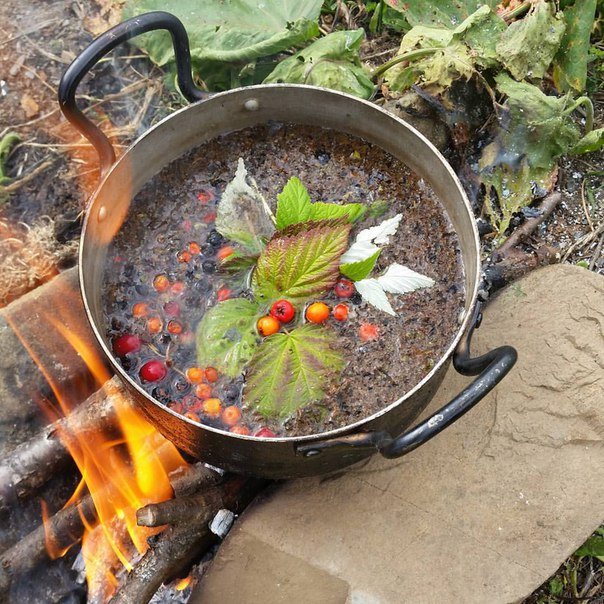
Recipes for brewing pine tea
Among the people, infusions and decoctions brewed from pine needles are often used to treat various diseases. They cope well with inflammation of the upper and lower respiratory tract. Particularly relevant are the bark, cones and needles of pine, fir and cedar.
Decoctions are an excellent choleretic agent and work as antidepressants. Pine tea supports and normalizes metabolism, helps to get rid of excess weight.
We offer several simple recipes for making tea from pine needles.
Classic pine tea recipe
To brew pine tea, it is recommended to use pine or spruce needles, fir or cedar bark. It is advisable to take fresh pine needles, this will make the taste of the drink much richer.
We prepare a drink from pine needles, washed to remove dirt and dust, cut into small pieces. Pour a tablespoon of aromatic tea leaves into a mug and pour boiling water for 20 minutes. Afterwards, strain the broth, add a spoonful of honey and enjoy the delicious pine tea.
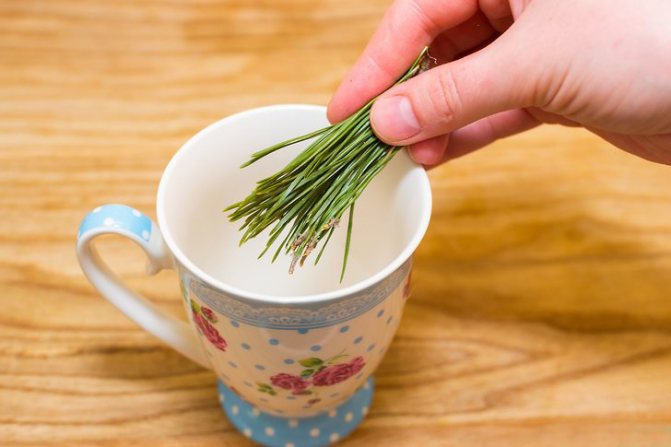
Pine needle tea
Needles taken from eastern white pine are perfect for it. Prefer young shoots plucked from the tips of branches, which look greener and contain the most nutrients. The drink turns out more flavorful and healthier. You can also use dry pine needles to brew the drink.
See also: Tea for the kidneys: list of herbs, features of use
Tea components:
- Pine needles - 0.5 cups;
- Water – 400 grams.
The needles must be chopped, filled with water and simmered over low heat for 10-15 minutes. There is no need to cook for longer than the specified time, because this can destroy the beneficial vitamins contained in the needles. Remove the drink from the stove, add sugar, honey or jam and drink wonderful tea.
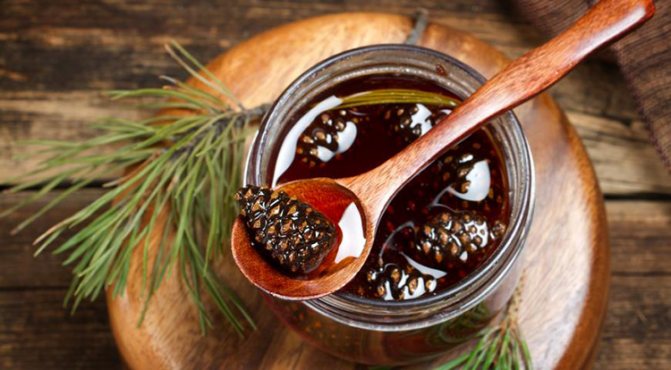
Tea with pine cones
To prepare the drink, you need to rinse the cones and then dry them using napkins or a towel. We chop the cones or cut them with a knife and put them in a container.
Important!
To brew pine tea, use only clean spring, bottled or filtered water. Tap water will only spoil the taste of the drink.
Pour hot water over the crushed cones, cover the cup with a lid and wrap it in a towel. After 15 minutes, after the tea has steeped, you can drink it. The drink will have an original taste and a unique pine smell.
Tea from fir branches
To prepare it we will need the following components:
- Spruce branches of spruce, pine or cedar - 1 tablespoon;
- Dried raspberry, currant or lingonberry leaves - 1 teaspoon;
- Oregano herb – 1 teaspoon;
- Tea or honey.
The branches need to be chopped. Place all ingredients in a teapot, add boiling water and leave for 10 minutes. Then the broth is filtered. Tea is ready. Drink it with sugar or honey, you can taste it with cookies or sweets.
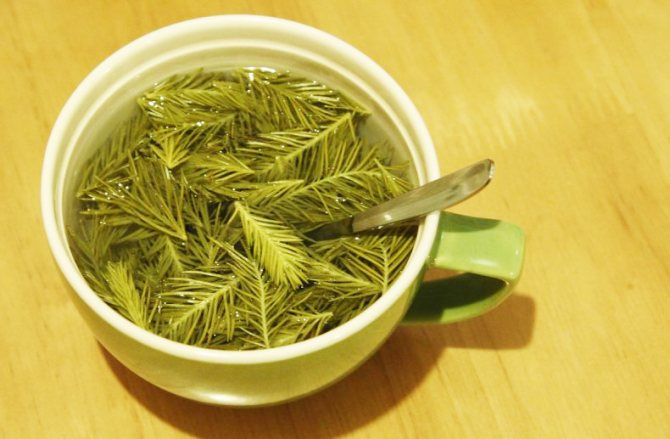
It is also recommended to add a slice of lemon or orange zest to pine tea. The drink has a delicious taste, it helps to cope with coughs and colds, tea is useful for vitamin deficiency, helps to activate metabolism, gives strength and vigor.
BREADING FOREST TEA CORRECTLY:
Examples:
1. Fireweed (fireweed tea) Leaves made from fireweed have served as a complete substitute for natural tea since ancient times. Fireweed leaves are suitable for collection throughout the summer.
Leaves used for brewing must be healthy, not spoiled by diseases and insects. They are processed by fermentation.
When drying raw materials, it is important that they do not burn over high heat. A normally dried leaf should crumble easily in your hands, and the tea leaves should match the natural color.
Properly prepared fireweed leaves give the drink an even, golden-yellow color, a pleasant smell and a weak astringent taste.
2. LINDEN BLOSSOM
Tea drinks made from linden blossom are well known. This tea has a honey smell, delicate taste, and perfectly quenches thirst. It has a diaphoretic effect and has long been used in the treatment of colds.
Linden blossoms are collected in the morning, in dry weather. Dry in the sun. Before brewing, the already dried flower is lightly fried, and to make the bouquet of the tea richer, add a pinch of a mixture of leaves of other plants.
3. DRIED BERRIES:
No less tasty drinks are made from a mixture of dried rowan berries, strawberries, and rose hips. To do this, the fruits are dried, fried and crushed.
The easiest way to prepare strawberries. They are dried, lightly fried and ground into cereal, trying to ensure that the tea leaves are more or less the same and their size does not exceed six square millimeters.
Rowan intended for fruit mixture is collected after the first frost, when the berry loses its bitterness and becomes sweeter. You need to dry the rowan over low heat, otherwise it will burn and turn black on the outside, while the inside will remain completely raw. Dried and crushed rowan fruits are added to the fruit mixture at the rate of a quarter portion - if you add more, the drink will be bitter.
Rose hips are treated somewhat differently. They need to be lightly crushed before drying, because otherwise the rose hips are not dried from the inside and are burned from the outside. After drying, the rose hips can no longer be crushed, but can be used immediately in tea leaves.

1+
About the author: admin
- Related Posts
- About bread and yeast. Homemade Bread Recipes
- How to make cedar sap
- Article-interview with the owner of the family estate in the Belgorod region Tatyana Anikaeva
« Previous entry
Natural Supplements
The forest is not only birches, pines, fir trees and other trees. Lower your eyes and you will see so much variety of vegetation that not only can, but should be used for brewing tea, that all the multi-storey store shelves will shyly turn away. So, what to make tea from on a camping trip so that it is not only tasty, but also healthy.
Strawberries
Not only berries are used, but also all parts of the plant, including roots. In addition to the indescribable taste, it has such wonderful properties as strengthening the stomach in case of diarrhea and relieving irritation in the throat.
Blackberries and raspberries
The subtle blackberry sourness is complemented by the sweetness of raspberries. But here you have to be careful. Both berries have a pronounced antipyretic effect and, as a rule, can work in the opposite direction for a healthy person. So you shouldn’t get too carried away with this drink.
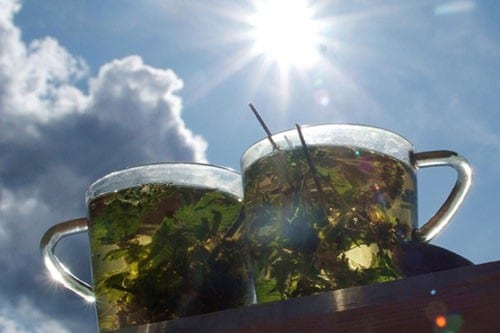
Raspberries, like blackberries, have a pronounced antipyretic effect
Rose hip
The amount of vitamins in this berry is literally off scale. But before brewing hiking tea from rose hips, the berries should be cleared of hairs and chopped. And most importantly, do not overcook. Long boiling will significantly reduce the vitamin C content in the drink.
Hawthorn
But the hawthorn berries should be thoroughly boiled for at least 10 minutes. In this case, you will receive a wonderful drink that normalizes cardiac activity and lowers blood pressure.
Melissa leaves
There is an opinion that mint does not have a very positive effect on male strength. Firstly, this opinion is not confirmed by anything. And secondly, lemon balm, although it tastes very similar to mint, is a slightly different plant. It has a calming effect, relieves nervousness and irritability, and normalizes blood pressure. Just pour boiling water over fresh leaves and let it brew for 5-8 minutes.
Chamomile
It has long been well known that this simple, cute flower is suitable not only for fortune telling, but is also a medicinal plant. The dried raw materials are poured with boiling water and placed on the fire. After 8-10 minutes, the drink, which has anti-inflammatory, hemostatic, sedative, analgesic, choleretic, diaphoretic and antiseptic effects, is ready.

Chamomile tea has a whole bunch of beneficial properties
Blooming Sally
The scientific name of this plant is different, but people dubbed it more accurately and informatively. Ivan-tea, and everything becomes clear. Brewing Ivan tea also does not involve boiling. It is enough to infuse the leaves of the plant for a few minutes and the drink is ready to drink. It has fewer beneficial properties than, for example, chamomile, but it has general strengthening properties, and this is important on a multi-day tourist trip.
And the last thing that everyone who has at least once drunk camping tea in nature affirms with confidence. It is almost never possible to replicate it in a city kitchen. So, in order to enjoy this unique drink again, you will have to pack your backpack again, stock up on food and necessary things and go into the forest. There is no other way.
Juniper and cedar tea
Tea activates the work of internal organs and endocrine glands, has an anti-inflammatory and diuretic effect. Tea composition: Blueberry leaves Lingonberry leaves Finely chopped cedar needles (pine, spruce). 3-4 juniper berries. Method for preparing tea: Rinse the pine needles in running water and chop with scissors. Place all ingredients into the kettle. Pour boiling water, close the kettle, leave for 5-7 minutes. Strain and, if desired, sweeten with honey. Serve the tea hot.
Herbal tea: the benefits and harms of your favorite drink
While some experts consider herbal medicine to be a promising direction in medicine, others are skeptical about herbal treatment. For people far from science, one thing is clear - adding leaves and herbs to tea helps discover new tastes and makes life a little brighter and more varied.
However, we should not forget that any plant contains a huge amount of various substances, the effect of which on the human body often remains unknown, and the thoughtless use of herbal teas to treat diseases is simply dangerous. However, let's not exaggerate.
One of the distinctive features of the use of plant-based infusions and decoctions is the mild and gradual effect of most of them. This means that with a high degree of probability, infrequent consumption of such drinks will not cause harm to the body. And provided that you are confident in the environmental friendliness of the raw materials, this makes them an excellent alternative to industrially produced teas.
Any long-term use of herbal teas should be accompanied by mandatory consultation with your doctor. This is especially true for pregnant women, children of primary school age and people suffering from chronic diseases.
Herbal teas lift your spirits and help you unwind after a hard day at work. Don't deny yourself the pleasure of pampering yourself with a cup of warm aromatic tea!
